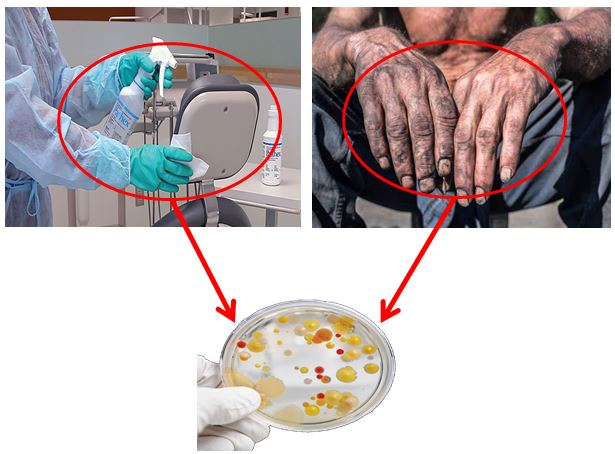Medical
Musa Yakubu Tula; Joel Filgona; Serah Erold Kyauta; Richard Elisha
Abstract
The ability of the bacterial isolate to cause debilitating effects on the host is intricate and is a function of many factors, particularly that of the host and the bacteria. Among the bacterial factors are the virulence mechanisms. As such this research was a cross-sectional study conducted between ...
Read More
The ability of the bacterial isolate to cause debilitating effects on the host is intricate and is a function of many factors, particularly that of the host and the bacteria. Among the bacterial factors are the virulence mechanisms. As such this research was a cross-sectional study conducted between October–December 2021 to establish the existence of virulence determinants on bacterial isolates from hospital fomites and the hands of healthcare workers. To achieve this, 100 samples (including sink, beddings, door handles, benches, and hands of healthcare workers) from children, female and male wards of Mubi General Hospital were analyzed for bacterial growth and were identified by standard procedure. Isolates were subsequently screened for virulent determinants (hemolysis, hemagglutination, biofilm production, and heteroresistance) phenotypically by standard methods. From the 72 bacterial isolates recovered, 23(31.9%) were biofilm-producing organisms. Of these, 15(20.8%) and 8(11.1%) were moderate and high biofilm-producing organisms respectively with no statistical difference (P=0.665). Pseudomonas aeruginosa (13.9%) was the most predominant biofilm-producing organism. Furthermore, hemolysin production was predominant in Staphylococcus aureus (71.4%), while positive hemagglutination reaction was predominant in P. aeruginosa (38.5%). Sixteen (16) bacterial isolates showed heteroresistance (HR) to various antibiotics; of these, Escherichia coli (43.8%) constitute the majority of the isolates. The expression of such virulence determinants by bacterial isolates in the study area may constitute a health risk to patients and hamper the quality of health care delivery.

Medical
Musa Yakubu Tula; Joel Filgona; Musa Sale Pukuma
Abstract
This systematic review appraised the current status of DEC in Nigeria from the year 2000 to August 2022 with regards to their prevalence, pathotypes distribution, and dominance within the 6 geopolitical zones. Three research databases (AJOL, PubMed, and Google Scholar) were explored for articles of interest. ...
Read More
This systematic review appraised the current status of DEC in Nigeria from the year 2000 to August 2022 with regards to their prevalence, pathotypes distribution, and dominance within the 6 geopolitical zones. Three research databases (AJOL, PubMed, and Google Scholar) were explored for articles of interest. From the outcome of the search, 19 full-length research articles from January 2000 to August 2022 that described the prevalence of DEC by molecular technique were recruited into the study. The results show that the studies of DEC were higher in the southern (52.63%) than in the northern (47.37%) region. Based on specimen types, 47.37% (9/19) and 52.63% (10/19) articles documented DEC from non-clinical and clinical sources, respectively. From the clinical sources, 70% of the studies targeted children of less than five years of age for the detection of DEC. The mean prevalence of DEC in Nigeria stands at 18.8%. The regional prevalence varies with the highest in the SW (32.57%) and the lowest in the NC (10.07%). The relationship between the prevalence of DEC to age group, gender, sample sources (clinical or non-clinical), study design (experimental and control groups), and regional differences were examined using odd ratios and chi-square statistics. Significance differences (P=0.0001) were obtained for all the parameters except gender which shows a lack of significant difference (P=0.1129). The most prevalent DEC pathotype was EAEC pathovar (44.62%) and the least was DAEC (2.23%). The regional distribution of the DEC pathotypes varies with the type of sample (clinical and non-clinical). Hybrid pathotypes were detected and constitute 4.89 % of the total DEC detected. The most prominent hybrid detected was EAEC/ETEC (39.13%). In that order, the DEC pathotypes were mostly resistant to ampicillin, penicillin, cotrimoxazole, and tetracycline, but were mostly susceptible to imipenem, gentamycin, and ofloxacin. We, therefore, advocate regular or periodic surveillance of DEC, and their drug resistance pattern, which will be useful to clinical personnel in their choice of a treatment regimen.



